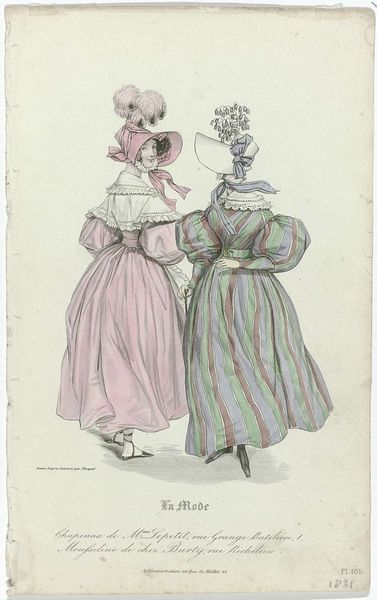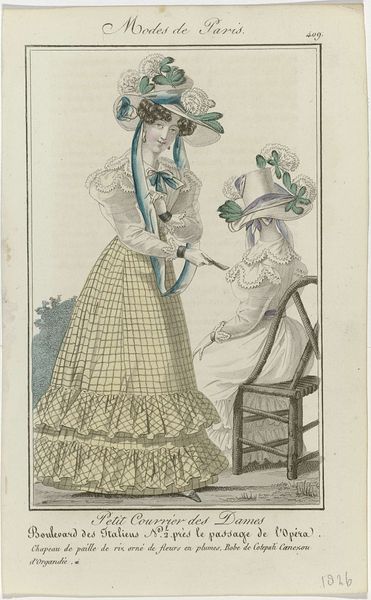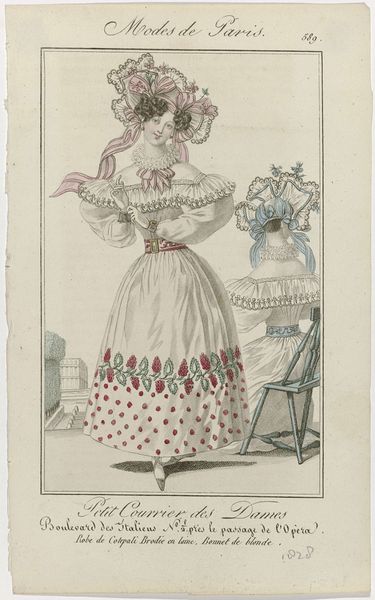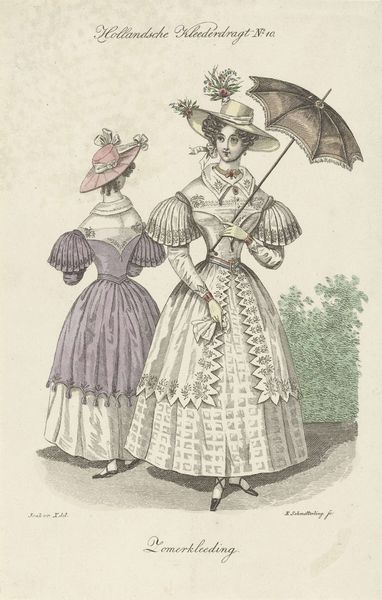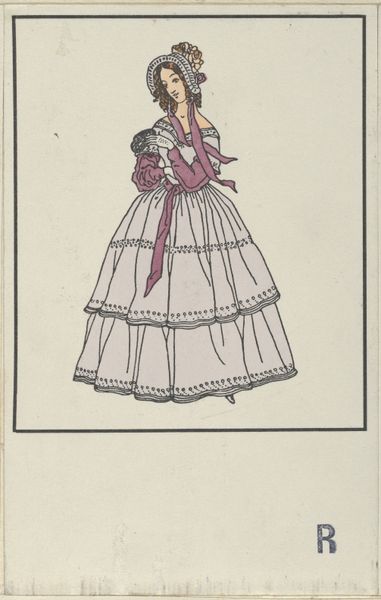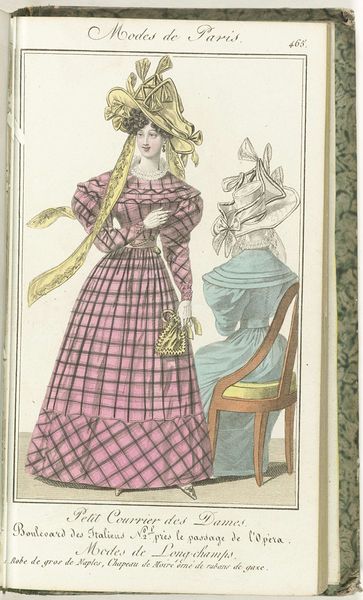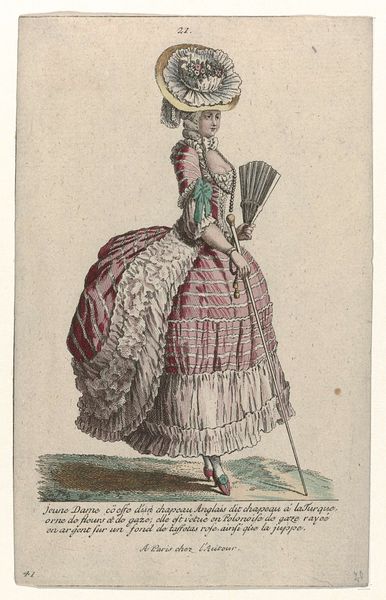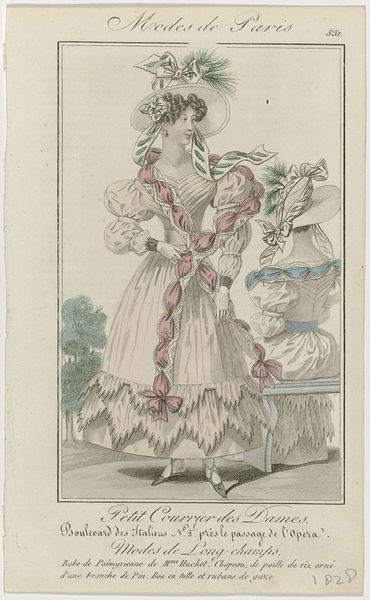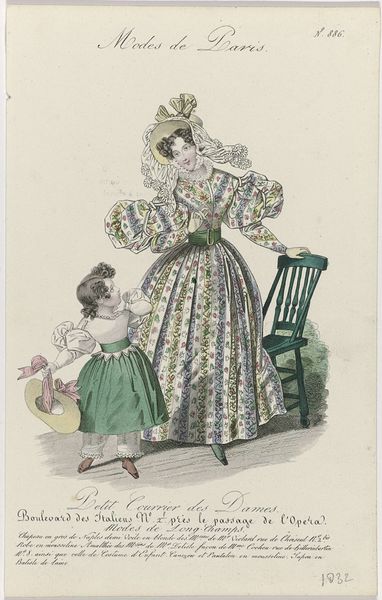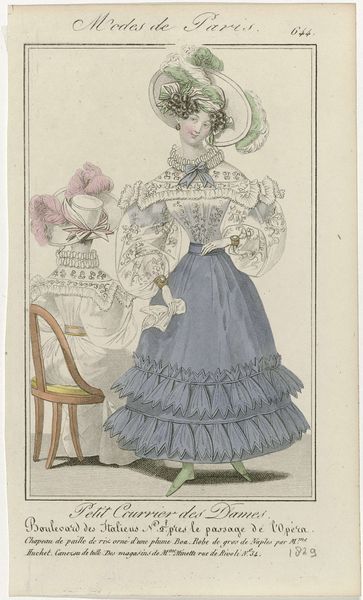
print, watercolor
# print
#
figuration
#
watercolor
#
romanticism
#
watercolour illustration
#
genre-painting
Dimensions: height 237 mm, width 148 mm
Copyright: Rijks Museum: Open Domain
Curator: Let’s examine “La Mode, 1831, Pl. 147, T.2,” a watercolor print by Jean-Denis Nargeot. It epitomizes Romantic era aesthetics through its depiction of current fashion trends. Editor: My first impression? Restrained yet opulent. The pastel palette feels very delicate, almost ephemeral. I notice the extravagant puffed sleeves and the elaborate hat—they certainly convey a sense of privileged femininity. Curator: Precisely. The materials are meticulously rendered—the weave of the shawl, the texture of the straw hat, and the subtle sheen of the umbrella. These details reflect the burgeoning textile industry and consumer culture of the time. Fashion became increasingly accessible due to industrial innovations and new modes of production. Editor: Absolutely. And it's essential to consider the social context of such imagery. These fashion plates served as tools of aspiration and distinction. They highlighted not only clothing, but a performance of class and gender. Look at the two men in the background—their attire subtly signals a different sphere of power and mobility. Curator: I’m also thinking about the skilled labor that went into creating both the fashions depicted and the print itself. The process from designer to artisan to consumer involved a complex network of often overlooked workers. Where was the fabric for the dress manufactured, under what conditions? Editor: We also have to think about the societal expectations these images reinforce. The emphasis on beauty, refinement, and the latest trends could be both empowering and constricting for women navigating their roles within the shifting social and economic landscape of the 19th century. This illustration, therefore, presents a very narrow image of femininity and aspiration. Curator: A fair point, but examining the printmaking process is just as crucial. The techniques, the inks used, the division of labor in creating these plates all provide vital clues about the period's industrial capabilities. Editor: Understanding this artwork calls for a more intersectional interpretation that examines its social and gendered implications in parallel with the process of production itself. Only by bridging these elements, can we hope to fully unpack the many layers of meaning imbedded in "La Mode." Curator: By viewing “La Mode” as a visual artifact shaped by the social forces and the material conditions of its time, it presents fresh avenues to reassess 19th century industrialization and culture. Editor: This print allows us to ask critical questions about representation, labor, and aspiration and thus connects historical images like these to current discussions about labor conditions and self-presentation in fashion and culture.
Comments
No comments
Be the first to comment and join the conversation on the ultimate creative platform.

